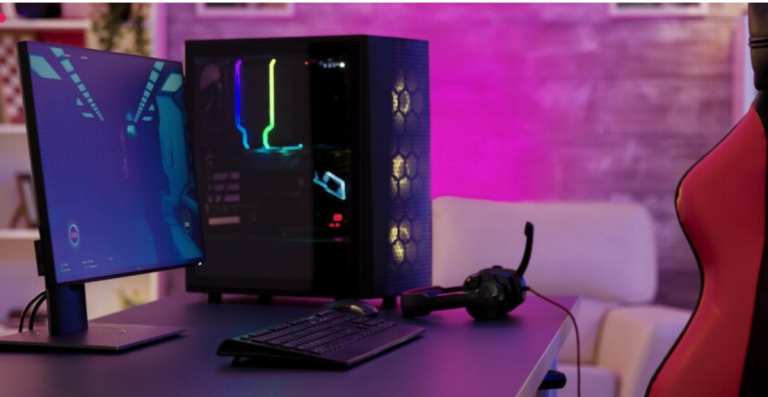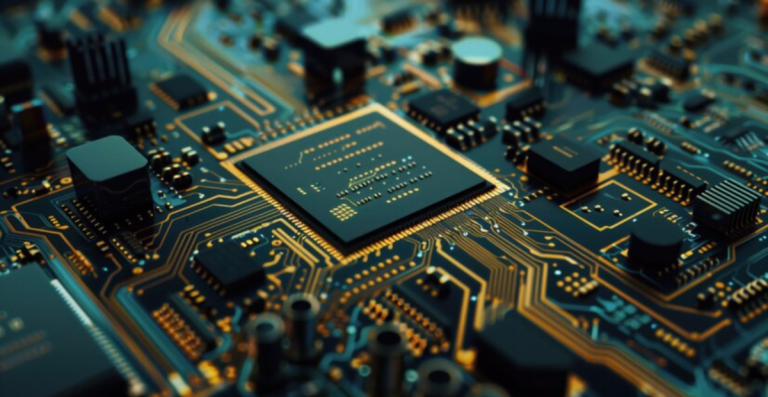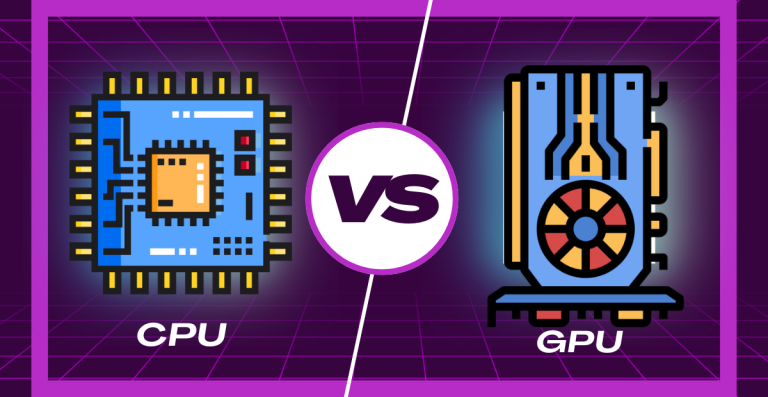A Comprehensive Comparison of Apple’s Silicon Evolution
Apple’s transition to custom silicon has redefined what users can expect from a modern computing experience. From the very first M1 chip to the recently released M4, each new generation has pushed the boundaries of performance, power efficiency, and integration across Apple’s hardware ecosystem.
This shift away from Intel has not only enabled sleeker and more capable Macs but also created a uniquely Apple experience that’s tightly integrated from silicon to software.
Before 2020, all Macs were powered by Intel chips, which came with certain limitations in performance scaling, power efficiency, and even hardware design. Apple’s move to its own ARM-based architecture marked a turning point.
It gave the company full control over both hardware and software, allowing for tighter optimization, better thermal efficiency, and significantly longer battery life all without compromising performance.
Apple’s chips are designed with a balance in mind and high-performance cores for demanding tasks and efficiency cores for day-to-day use. This architecture, known as a big-little design, has helped Apple create systems that feel fast while sipping power when idle. As each chip progressed from M1 to M4, we’ve seen gains such as:
- Faster rendering and export times in video and creative apps
- Improved machine learning performance through Neural Engine upgrades
- Lower heat output with better battery management
- Seamless multitasking across memory-hungry applications
How has Apple Silicon evolved step by step? Whether you’re a content creator, developer, or just someone exploring whether to upgrade their Mac, you’ll find the information here useful in understanding where each chip generation stands and which one may be right for your needs.
Upgrade considerations for users
Not everyone needs to jump to the newest chip right away. While each generation brings improvements, the real-world difference depends on how you use your Mac. If you’re a student or casual user, even an M1 might still serve you well.
On the other hand, professionals working in video editing, 3D design, or coding can greatly benefit from the newer architecture and expanded GPU cores in the M3 and M4 chips.
Evolution of Apple Silicon
This is a truly historic change for Apple that goes beyond just a change of hardware. It is a complete rethinking of how performance, efficiency, and, ultimately, user experience come together in a Mac. The M1, when first introduced, foretold this new initiative, and thereafter, a series of chips began to propel new advances.
Each generation of Apple Silicon brought upgrades more like a thoughtful consideration of the tension between power and battery life, form and function. And so this story of evolution becomes a story of enhancement for everyone who operates a Mac daily, not just for Apple.
Transition from Intel to M-Series Chips
Almost all major hardware transitions in Apple’s history are outshone by the switch from Intel processors to custom. This was not just a change in suppliers, but a strategic move that allowed Apple to have complete control over all aspects of performance, design, and long-term innovation in the Mac.
The outcome changes the definition of what it means to users by laptops and desktops when it comes to battery life, efficiency, and the relationship between macOS and hardware.
Let us take a look at the reasons that prompted Apple to make this transition, the process of change, and the first Apple silicon chip: what benefits the M1 delivered straight out of the box-and what’s wrong with it.
Reasons Why Apple Left Intel
For years, Apple depended on Intel for the processors that powered MacBooks, iMacs, and Mac Pros. However, this partnership eventually started to show cracks:
- Slower innovation cycles: Intel’s delays in moving to smaller chip processes (like the 10nm and 7nm nodes) affected Mac upgrade timelines.
- Thermal inefficiencies: Intel chips consumed more power and generated more heat, limiting design flexibility in thin and light laptops like the MacBook Air.
- Limited vertical integration: Apple couldn’t fully optimize macOS or its apps for Intel processors, which weren’t designed specifically for Apple hardware.
By switching to in-house ARM-based designs, Apple could eliminate these bottlenecks and develop a tightly integrated system, something it had already done successfully with the iPhone and iPad.
Timeline of the migration
Apple officially announced its transition to Apple Silicon in June 2020 at its WWDC keynote. The migration unfolded in stages:
- November 2020: The M1 chip debuted in the MacBook Air, MacBook Pro (13-inch), and Mac Mini.
- 2021–2022: Apple gradually replaced Intel chips across more models, introducing M1 Pro, M1 Max, and M1 Ultra variants.
- By 2023: Most mainstream Macs had moved to Apple silicon, including the redesigned iMac and the high-end Mac Studio.
- 2023–2024: Apple completed the transition by introducing M2 and M3 variants, including in the Mac Pro.
This staged rollout ensured that developers had time to optimize apps for the new architecture, and it gave users a smooth transition experience without compatibility issues.
Early benefits of the M1
The original M1 chip set a new standard in computing, and it did so in entry-level machines. Users immediately noticed:
Instant-on performance and near-silent operation
Massive battery life gains (up to 20 hours on a MacBook Pro)
Significant speed boosts even in base models, outperforming many Intel-powered high-end machines
Universal app support through Rosetta 2, ensuring that most Intel-based software runs flawlessly on M1
It wasn’t just a good chip that redefined what people expected from laptops and desktops in both performance and energy efficiency.
Generational Improvements in M-Series Chips
Each generation of Apple Silicon has brought measurable improvements not just in performance, but in how these chips integrate into the Mac experience.
From the moment the M1 launched, Apple set out on a path of yearly refinement, with every new chip adding more efficiency, more raw power, and smarter hardware capabilities. But Apple’s goal hasn’t just been speed, it’s been about rethinking how Macs work at a fundamental level.
M1: The foundation of Apple Silicon
The M1 was Apple’s first bold step into the world of custom chipmaking. Introduced in 2020, it marked a massive departure from Intel’s x86 architecture and immediately made headlines for its surprising power and efficiency.
It featured 8 CPU cores split evenly between performance and efficiency, and up to 8 GPU cores. The combination of high-performing silicon and a unified memory architecture made it clear that Apple wasn’t just experimenting it was building the future of the Mac.
Despite being a first-generation product, the M1 delivered on every front. Macs became quieter, cooler, and dramatically faster. The MacBook Air, now fanless, handled tasks with a level of fluidity never seen in previous models. For most users, the M1 was not just an improvement it was a revelation.
Seamless integration with macOS for optimized performance and efficiency
Huge leaps in battery life compared to Intel-based models
Desktop-class power in fanless laptops like the MacBook Air
M2: Incremental architectural refinement
A year later, the M2 came along as a natural evolution. It didn’t aim to be revolutionary like the M1, but rather improved on a solid foundation. The CPU cores were faster, the GPU supported up to 10 cores, and the memory bandwidth saw a noticeable bump.
These refinements made the M2 MacBooks slightly more capable, especially for multitasking and graphics-heavy applications. That said, the leap from M1 to M2 was more subtle than dramatic.
Unless your workflows demanded just that bit of extra performance, the difference could go unnoticed in day-to-day use. The M2 was aimed at those who wanted the latest, but didn’t necessarily need it and it served that purpose well.
Up to 18% faster CPU performance
Up to 35% better GPU performance with a 10-core GPU option
Support for 24GB of unified memory, compared to 16GB on the M1
M3: Leap to 3nm process
With the M3, Apple shifted gears again. This time, the leap wasn’t just in architecture it was in the manufacturing process itself. The M3 was Apple’s first chip built on the 3nm process, allowing it to pack more transistors into the same space while reducing power consumption.
This generation introduced real hardware-level innovations. Performance cores got faster, efficiency cores became more capable, and the GPU brought features like hardware-accelerated ray tracing and mesh shading.
Creative professionals saw noticeable gains in rendering, graphics workflows, and app responsiveness. Even for everyday users, the M3 made MacBooks feel quicker and snappier, especially when juggling multiple apps.
This generation marked a turning point where the benefits of Apple silicon began branching into high-end professional territory, making it more appealing for users who once relied on MacBook Pros powered by Intel.
What made the M3 different?
Higher transistor density led to faster performance with less power draw
Support for hardware-accelerated ray tracing in the GPU, improving gaming and 3D rendering
More efficient Neural Engine for machine learning tasks
Better power efficiency, allowing thinner, quieter designs with longer battery life
M4: Performance and efficiency scaling
Now with the M4, Apple is refining and pushing its limits even further. Built on an enhanced 3nm process, the chip now features 28 billion transistors a 12% increase from the M3. It brings with it improvements in CPU performance, GPU rendering, and energy management that build meaningfully on the groundwork laid by earlier models.
The M4’s high-performance and efficiency cores are not only faster but smarter. They distribute tasks more intelligently and keep power consumption in check even during demanding workloads.
Benchmarks show strong gains in both single-core and multi-core performance, and real-world testing backs that up with faster load times, smoother editing, and quicker file processing.
For creative professionals, developers, and power users, the M4 isn’t just another step it’s a powerful tool that closes the gap between portable and desktop-class performance. And for everyday users, it means a Mac that runs faster, lasts longer on battery, and stays cool even under stress.
What the M4 brought to the table:
Substantial CPU and GPU gains with refined core designs
Next-gen Neural Engine optimized for on-device AI tasks
Support for more unified memory bandwidth, critical for multitasking and video editing
Designed to pair with macOS features like dynamic caching and more advanced power management
Architecture and Performance
When Apple first introduced its own chips, it didn’t just aim for raw speed. The focus was on creating a balanced experience where every part of the chip worked in harmony. Over the years, Apple refined that approach. From CPU upgrades to GPU redesigns and memory improvements, every change brought a smoother, faster, and more efficient experience for the user.
Central Processing Unit (CPU) Across Generations
The performance of Apple’s chips improved steadily over the years, but it was never just about adding more power. The original M1 combined performance and efficiency cores to manage different tasks wisely.
Lighter tasks used less power, while heavy work like editing or exporting switched to high-performance cores. With each generation, Apple made these cores faster and better at balancing workloads. The M4 takes this even further.
It handles tasks more smartly, which results in quicker app launches, faster file handling, and smooth multitasking without battery drain or heating issues. This steady improvement in CPU performance shows up every day whether you are browsing the web, working with spreadsheets, or editing videos.
Graphics Processing Unit (GPU)
Graphics performance is one of the areas where Apple has made serious progress. The M1 started with a capable GPU, good enough for light creative tasks and smooth visuals. The M2 added more GPU cores, which gave users a boost in rendering and app responsiveness.
But it was the M3 that made a real leap in graphics technology. It introduced support for things like ray tracing and mesh shading, which are features usually found in high-end desktop GPUs.
Here’s what the M3 and M4 brought to the table:
Smoother real-time rendering in 3D apps
Better lighting effects in games and design tools
Less heat during long graphics sessions
The M4 continues this progress with better performance while using less power. That means users can enjoy high-quality visuals without sacrificing battery life.
Neural Engine and Machine Learning
The Neural Engine is what powers intelligent features on your Mac things like speech recognition, photo sorting, and even on-device AI. Every generation of the M-series has made this component more powerful.
Here’s how it has improved:
M1 handled around 11 trillion operations per second
M2 increased this to nearly 16 trillion
M3 crossed 18 trillion
M4 now reaches up to 38 trillion operations per second
This means your Mac can run complex AI tasks faster and without needing to send anything to the cloud. Whether you are using photo apps with automatic enhancements or apps that respond to voice commands, the experience is now smoother and quicker.
Unified Memory Architecture
One of Apple’s smartest design decisions was using a shared memory system. Instead of having separate memory for the CPU and GPU, the M-series chips use a single pool of memory that all parts of the chip can access.
This makes everything faster and more efficient. With each generation, Apple not only increased how much memory the chips could support, but also improved the speed at which data moves between parts of the system.
Some of the improvements include:
Faster response when switching between apps
Better performance when working on large files
More stability during multitasking
Even when running several heavy apps at once, Macs now stay responsive and cool. This smooth experience comes from the quiet but powerful upgrades Apple made behind the scenes.
Impact on Mac Hardware Ecosystem
Apple Silicon didn’t just change what was inside the Mac reshaped the entire hardware experience. From sleeker designs to improved thermals and battery life, every product in the Mac lineup benefited from the shift to custom M-series chips.
Apple’s tight control over chip design and hardware integration allowed it to fine-tune performance, energy usage, and internal layouts in ways that weren’t possible with Intel-based machines. This has resulted in Macs that not only run faster, but also feel more responsive, last longer, and operate quieter.
Let’s break down how different product lines evolved after the transition.
MacBook Air & MacBook Pro Innovations
The MacBook Air was one of the first to receive the M1 chip immediately became a fanless marvel. Without the need for active cooling, it stayed completely silent while offering a huge leap in performance.
Users could now edit videos, run multiple applications, and enjoy hours of battery life without a hitch. Each successive chip M2, M3, and now M4 has added incremental boosts to speed, graphics, and efficiency, keeping the Air lightweight yet powerful.
For the MacBook Pro, the transformation was more dramatic. With the M1 Pro and M1 Max, Apple gave professionals access to high-core CPUs and powerful GPUs, while significantly improving battery life. The 14-inch and 16-inch models now deliver desktop-class performance in a portable form factor for video editors, software developers, and 3D artists on the go.
Notable hardware changes included:
Thinner and lighter designs, even with improved performance
Mini-LED displays and ProMotion (up to 120Hz refresh rate)
Longer battery life across all workloads
More ports, including HDMI, SD card slot, and MagSafe charging
iMac and Mac Mini Updates
The iMac received a fresh identity with Apple Silicon. The 24-inch M1 iMac debuted in a thinner, more colorful design thanks to the efficiency of the M-series chips. By eliminating the need for bulky cooling systems, Apple created a desktop that was not only beautiful but surprisingly powerful for its size.
The Mac Mini, on the other hand, became a performance beast in a compact box. It was among the first Macs to show off the power-per-watt advantage of the M1, and with the M2 and M2 Pro variants, it now caters to a broader range of users casual home setups to serious developers needing reliable computing in small spaces.
Upgrades brought by Apple Silicon:
Smaller enclosures due to improved thermal management
Higher performance at lower cost
Quieter operation, even under load
Mac Pro and Mac Studio Advancements
For high-end professionals, Apple introduced the Mac Studio machine that didn’t exist before Apple Silicon. It sits between the Mac Mini and Mac Pro in both size and power, packing in the M1 Max, M1 Ultra, and now newer M-series chips to handle advanced workloads like 8K video editing, 3D rendering, and ML model training.
The Mac Pro, once Intel’s last stronghold, has now made the full switch to Apple Silicon. It retains its modular tower design, but with an M2 Ultra chip inside, it delivers massive improvements in performance and efficiency. Though some users miss the full expandability of Intel-based models, the tradeoff is a system that runs cooler, faster, and with fewer power demands.
Key highlights of the high-end redesigns:
Massive CPU and GPU performance gains
Whisper-quiet operation even under extreme workloads
Efficient power usage with reduced heat output
Real-World Applications and Efficiency
When people buy a Mac, they want it to be fast, quiet, and easy to use. Apple Silicon chips have made a big difference in how Macs feel in real life. It is not just about numbers or tests. It is about how the Mac works every day. Whether someone is editing videos, doing homework, or watching movies, these new chips help everything run better.
Professional Workload Capabilities
People who use MacBooks for heavy work like video editing, making music, or teaching computers (machine learning) have seen big changes.
Some real examples:
- Final Cut Pro now saves and exports videos much faster.
- Logic Pro lets people work on music without slowing down.
- Apps like Photoshop and Blender work more smoothly now.
- Computers learn faster when running smart apps, because of the new Neural Engine.
All of this means professionals can do more in less time. Their Mac does not get stuck or freeze while doing big jobs.
Chip Neural Engine ML Performance
| M1 | 16-core | Baseline |
| M2 | Enhanced | 40% faster |
| M3 | Advanced | 2x faster |
| M4 | Latest gen | 3x faster |
Battery Life and Power Saving
One of the best things about Apple Silicon chips is that they save power. This means the battery lasts longer. People can use their Mac all day without needing to charge it again.
Here is what users have noticed:
- MacBook Air can last up to 15 to 18 hours on normal use.
- MacBook Pro can work for over 20 hours before it needs charging.
- Even when the Mac is not in use, it still saves power well.
This helps students, travelers, and anyone who needs their Mac on the go. It gives them more time to do what they want without looking for a charger.
Thermal Management and Noise Reduction
Older laptops used to get hot and noisy, especially when working hard. But the new Apple Silicon Macs stay cool and quiet, even when doing big tasks.
This means:
No fan noise in quiet rooms like libraries or music studios.
Laptops do not get hot while sitting on your lap.
The Mac works better for longer periods without slowing down from heat.
This makes the Mac more comfortable to use, especially during long working hours.






